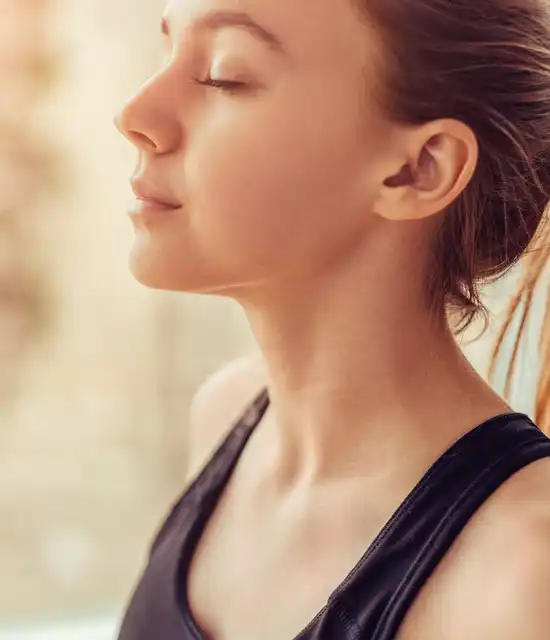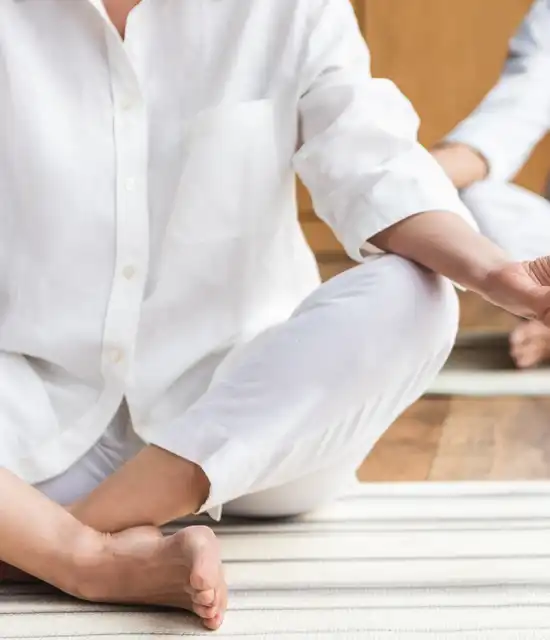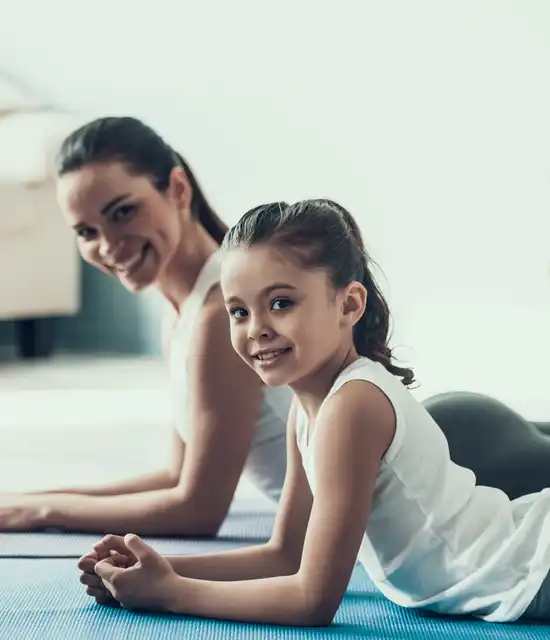Published on April 24, 2020Updated on June 19, 2023
While yoga is famous for its relaxing effects on the body and mind, it’s also an extraordinary anti-ageing technique that has a number of preventive and curative properties. Indeed, eastern legends tell of certain yogi masters who lived for hundreds of years, and in the west, there are many compelling examples of yogis who are in excellent shape at an advanced age. Former Hollywood actress Tao Porchon-Lynch, who later became a yoga instructor, taught asanas (or yoga poses) until her death at the age of 101!
Yoga’s anti-ageing properties are also mentioned in ancient yoga texts, as longevity gives the yogi more time to complete their spiritual path. However, you don’t have to be flexible or athletic to enjoy the anti-ageing benefits of this technique. Whatever your age or physical condition, anyone can experience the benefits of yoga right from the start. Marina Bordet, a yoga and pilates instructor at the Monte-Carlo Bay Hotel & Resort, explains how yoga keeps the body young.
# Eliminating toxins
An effective yoga session will put pressure on different parts of the body, releasing toxins stored in our tissues. This makes it easier for your body to flush them out. And when certain poses are adopted at key moments of the session, they transform these toxins into what the ancient texts call “the fluid of eternal youth”.

# Better recovery and tissue regeneration
Through its effects on the nervous system, yoga improves recovery, sleep quality, nutrient absorption and tissue regeneration.
Modern scientific studies have also proven that meditation positively affects our genes, as it activates or deactivates certain genetic properties and protects DNA telomeres, which are sort of like indicators of bodily wear and tear.


# Reduced stress, oxidation and acidity
Yoga promotes inner peace. It reduces stress, which on a hormonal level translates to a decrease in blood cortisol, a stress hormone that reduces skin elasticity, increases fat storage, and accelerates cerebral degeneration.
Reducing stress also slows down the oxidation process, which decreases cellular ageing. Yoga allows you to slow your breathing, thereby restoring the body’s acid-base balance, which is essential for combating ageing and inflammation. An experienced yoga instructor will teach you how to do more while breathing and exerting yourself less.
The peace of mind that you get from yoga relaxes your tense facial muscles, preventing the appearance of wrinkles and the loss of volume in the face. This means that yoga has a similar effect to botox!
# Younger muscles, joints and bones
Muscle movement helps to maintain muscle mass and joint function. Yoga strengthens the weaker areas of the body (especially the lower back), relieves painful tension, and teaches you how to active those weaker areas. Movement keeps your joints healthy and lubricated. Bandhas, a method of co-activating different muscles around each joint, will allow you to engage in physical activity while protecting your joints. Once again, an experienced yoga instructor will explain how to use bandhas for each joint, in order to protect and strengthen them and make your movements more effective.

Sequencing your poses is good for bone formation, or osteogenesis, in contrast to osteoporosis. In this way, yoga helps to combat osteoporosis on two levels. First, it balances your body’s acidity to prevent bone loss, and second, it encourages bone cell renewal by getting the muscles working. In terms of posture, yoga considerably improves the way you stand, as well as your balance and the fluidity of your movements. This helps you achieve a more elegant posture and a younger-looking walk.
# A younger brain
Lastly, yoga improves cognitive functions and delays the ageing of the brain. It protects neurons and the nervous system, and stimulates the flow of oxygen to the brain. By gradually learning to breath less, oxygen is distributed more efficiently to the cells. This may seem paradoxical at first glance, but it actually has a very simple explanation. Cells need the right amount of carbon dioxide in order for the haemoglobin in the blood to carry the oxygen. As such, it’s best to avoid breathing too much—that way, you’ll have enough carbon dioxide stored in the body to efficiently distribute the oxygen to the cells.

In this way, yoga fights ageing on multiple levels. It keeps the whole body in top shape, while slowing the effects of ageing and developing a sense of respect and acceptance toward it. Yoga teaches us to better use and preserve this remarkable vessel for our mind, and frees us from our fear of the passage of time. It’s worth noting that yogis don’t think of their age in terms of the number of years they’ve lived, but rather the number of heartbeats and breaths they’ve had. Something to think about...
About Marina Bordet
A yoga, pilates and fitness instructor and personal trainer, Marina is the manager of the yoga studio at the Monte-Carlo Bay Hotel & Resort.
More info on these classes at the Monte-Carlo Bay Hotel & Resort: https://www.montecarlosbm.com/en/wellness/monte-carlo-bay-hotel-resort/yoga-pilates
Follow Marina on Instagram for live yoga classes and plenty of tips for beginners: fitandcalm_with_marina

You might also like…
New Moods reopens: let the party begin! Interview with Stéphane Lobono and Alfonso Ciulla
Read the interview with Stéphane Lobono and Alfonso Ciulla about the reopening of New Moods in Monaco, an iconic venue dedicated to live music.

Repossi: high jewellery and avant-garde design. Meeting with Anne de Vergeron
Meet Anne de Vergeron, CEO of Repossi, for a creative and sparkling tour through the history and behind the scenes of this legendary jewellery house.

Emmanuel Pilon: Chef at Le Louis XV - Alain Ducasse in Monaco
Meet Emmanuel Pilon, the new chef at the fine-dining restaurant Le Louis XV - Alain Ducasse in Monaco.

